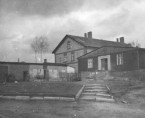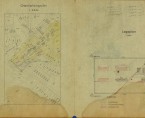Janinagrube
A sub-camp in Libiąż, near Oświęcim, at the Janina coal mine operated by the German company Fürstengrube GmbH. The first 400 Auschwitz prisoners were brought there in September 1943 and replaced British POWs, including Palestinian Jews, who had worked there until being withdrawn because of frequent sabotage and refusal to work.
The population of the camp at the end of 1944 was 900—mostly Jews from Poland, Bohemia, Greece, France, Belgium, the Netherlands, and Italy, as well as several score Poles and Germans. They were housed in a brick building and four wooden barracks, with a kitchen and food storage located in another barracks. The prisoners worked in difficult conditions, mining and transporting coal to the mineshaft without protective clothing. By January 1945 more than 40 prisoners died in the camp or were killed in the mine, and almost a thousand were sent to Birkenau or Monowitz as unfit for work. The directors of the sub-camp, in turn, were SS-Unterscharführer Franz Baumgartner and SS-Oberscharführer Hermann Kleeman. There were 38 SS men in the garrison.
During the evacuation in January 1945, some of the prisoners were transported by rail from Gliwice to the Mauthausen and Buchenwald camps, while others had to cover more than 200 km on foot all the way to Gross-Rosen in Lower Silesia. The SS left about 60 prisoners behind at the sub-camp because they were incapable of marching. After liberation, they were taken under the protection of Libiąż residents.

